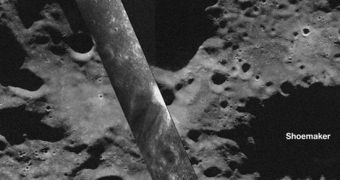Using a radar instrument aboard the Indian lunar space probe Chandrayaan-1, the American space agency managed to get its first glimpses at what's inside the Moon's polar craters, which are not visible from Earth, and remain shadowed all of the time. The mini-SAR synthetic radar sent back its first transmission since the probe was launched, and astronomers managed to observe the mysterious formations for the first time in history. Now, NASA will seek to map what the probe finds, catalog it, and maybe even look for signs of frozen water on the lunar surface.
“The only way to explore such areas is to use an orbital imaging radar such as Mini-SAR. This is an exciting first step for the team which has worked diligently for more than three years to get to this point,” Benjamin Bussey, the deputy principal investigator for Mini-SAR, says. He and his colleagues are working in the Applied Physics Laboratory at the Johns Hopkins University (JHU), in Laurel, Maryland.
“During the next few months we expect to have a fully calibrated and operational instrument collecting valuable science data at the moon,” NASA's Space Operations Mission Directorate Mini-RF Program executive, Jason Crusan, adds, reporting from Washington.
Chandrayaan-1 took its first picture on November 17th, 2008, over both the North and the South Pole of the Moon. It photographed impact features and shadowed craters, some larger than 10 kilometers in diameter. Future flybys will focus on trying to identify remnants of frozen water buried under the rocks. The state-of-the-art imaging spectrometer on board the Moon Mineralogy Mapper will offer optimum-quality pictures of the lunar surface, and will map it at high spatial and spectral resolution.
The Indian space probe, built with international assistance, was launched from the Satish Dhawan Space Center in India on October 21st, and made it to the Moon's orbit on November 8th.The mini-SAR was mostly built at the Naval Air Warfare Center, but it also involved several other contractors, both public and private. The Satellite Communications Facility at the JHU Applied Physics Laboratory is the mission's main control center in the Western hemisphere.

 14 DAY TRIAL //
14 DAY TRIAL //